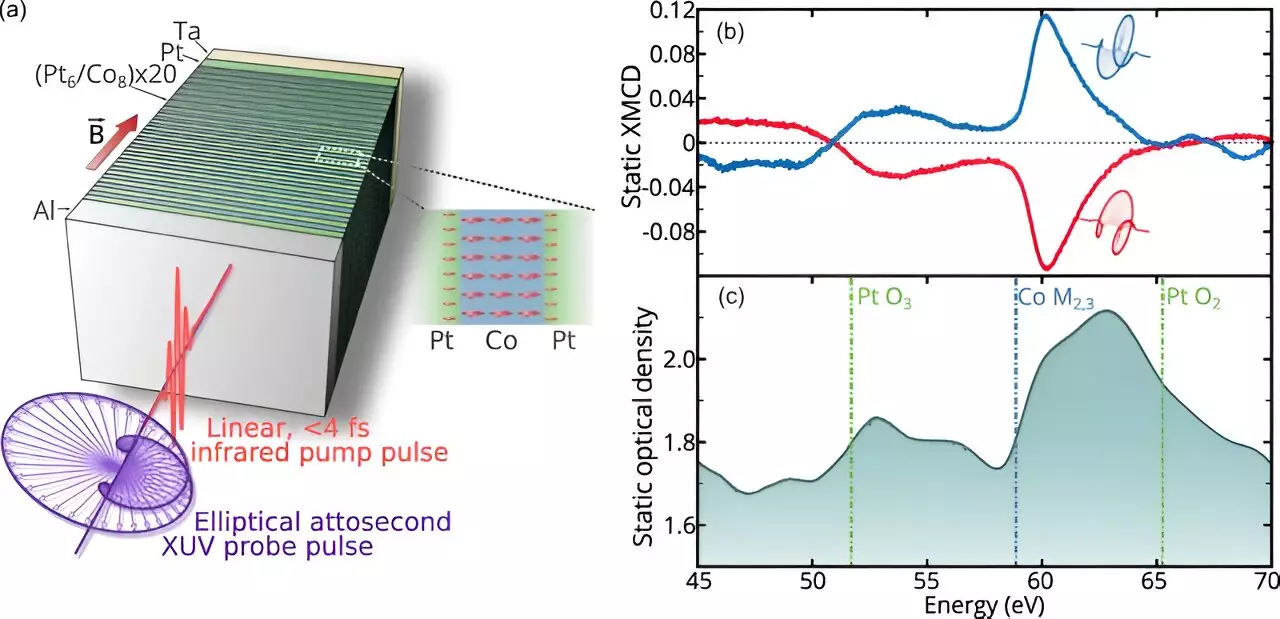The recent advancements in the phenomenon of spin currents mark a significant leap forward in the field of condensed matter physics. Spin currents, a sophisticated form of electrical flow characterized by aligned electron spins, promise unprecedented improvements in the efficiency and speed of electronic devices. This potential originates from the novel interactions of laser technology with magnetic materials, leading to groundbreaking applications in information technology and energy consumption.
A collaborative effort among international physicists has unveiled a method for generating spin currents directly by leveraging specific ultrashort laser pulses. In their research, published in the reputable journal *Physical Review Letters*, the scientists combined the attributes of linearly polarized laser pulses and circularly polarized probe lasers. This unique setup differentiated itself from previous attempts, which often involved indirect methods of generating spin currents and struggled with inefficiencies stemming from mixed electron orientations.
The team’s innovative approach centered around a carefully constructed target composed of 20 alternating layers of platinum and cobalt, with each layer measuring a mere nanometer in thickness. This precise layering creates a conducive environment for the manipulation of electron spins through the application of a strong magnetic field. By aligning the magnetic field perpendicular to the layered materials, the researchers ensured the spins of the electrons in both cobalt and platinum became aligned, forming a robust foundation for the subsequent laser interaction.
Upon directing a linearly polarized laser pulse onto the target, the researchers subsequently deployed a circularly polarized probe laser. The interplay between these lasers triggered a rapid shift in the orientation of electron spins across the thin layers within a fraction of a femtosecond. This astonishingly fast manipulation represents a significant improvement over existing methods, underscoring the efficiency of their approach.
The experiment evoked considerable interest not only for its practical implications but also for the theoretical underpinnings it unveiled. Following their experimental work, the research team engaged in theoretical calculations to model electron interactions. Notably, the outcomes of these calculations corroborated the empirical data collected during experimentation, highlighting a harmonious relationship between theory and practice in this exciting area of research.
The findings from this study extend far beyond academic interest—they herald potential breakthroughs in electronic device design. The effective generation of aligned spin currents could lead to devices that are not only faster but also more energy-efficient. As technology continues to advance and energy conservation becomes increasingly critical in the modern world, the application of spin currents could fundamentally transform how our devices operate, reduce energy costs, and increase processing speeds.
The innovative work accomplished by this international team of physicists resonates deeply within the field of materials science and electronics. Their ability to directly generate spin currents through ultrashort laser pulses marks a pivotal moment for the future of spintronics, weaving together complex interactions of light and magnetic materials. As researchers continue to explore and refine these techniques, the promise of a more efficient and rapid electronic landscape looms closer than ever.

